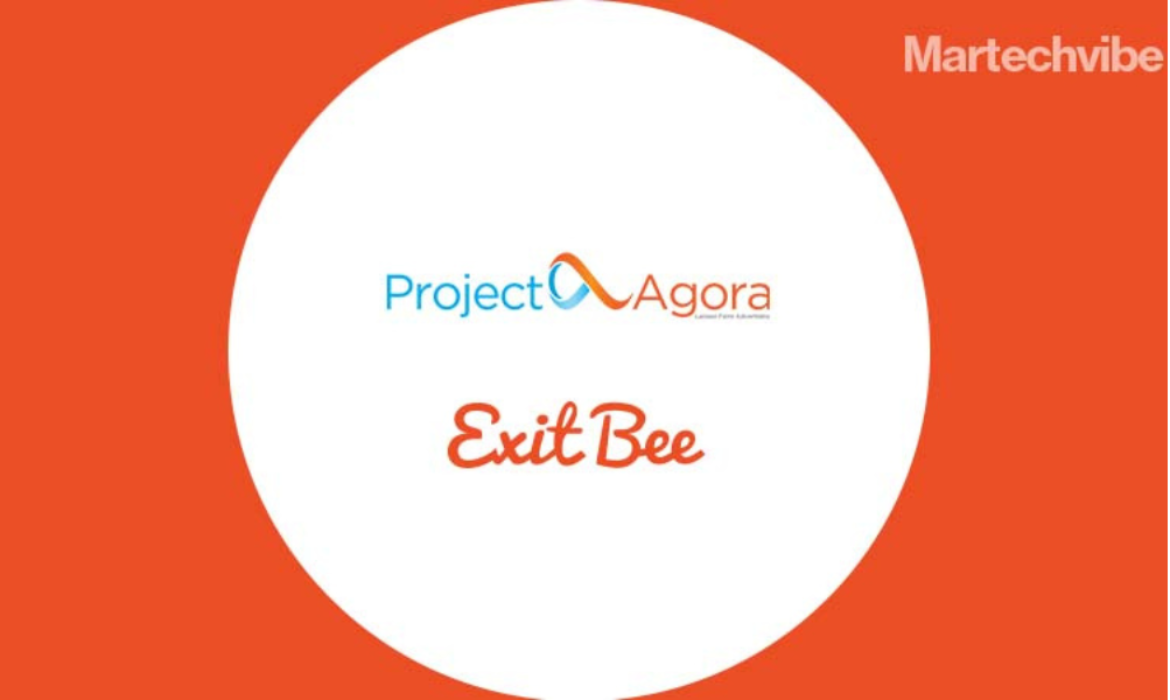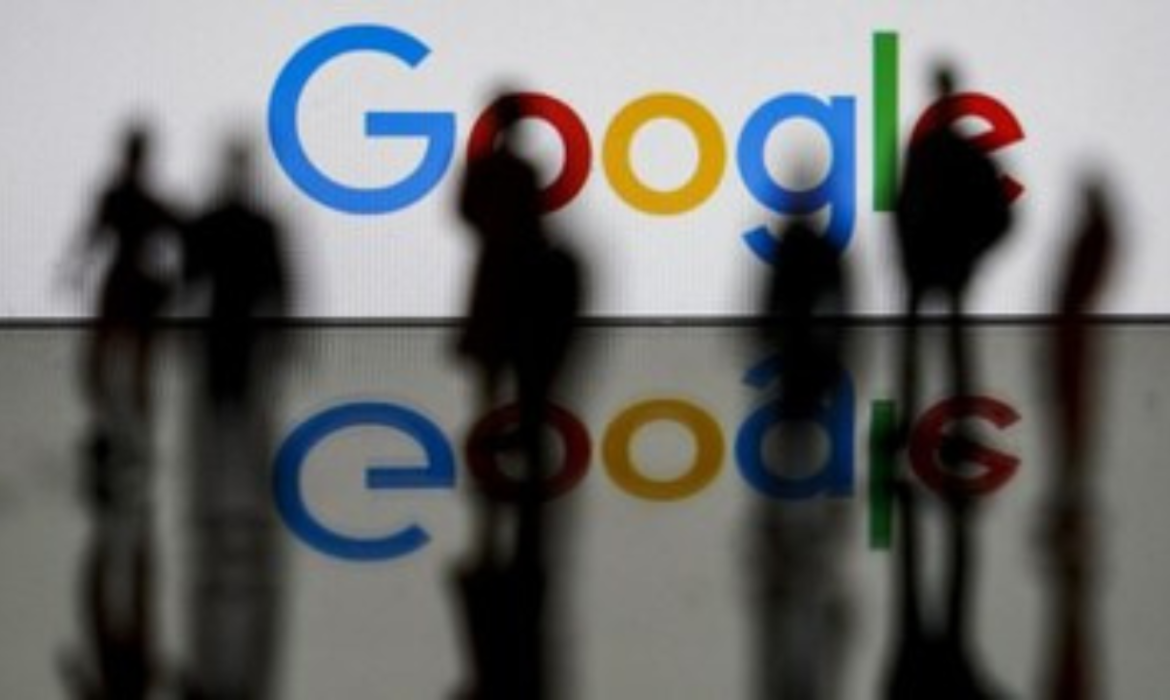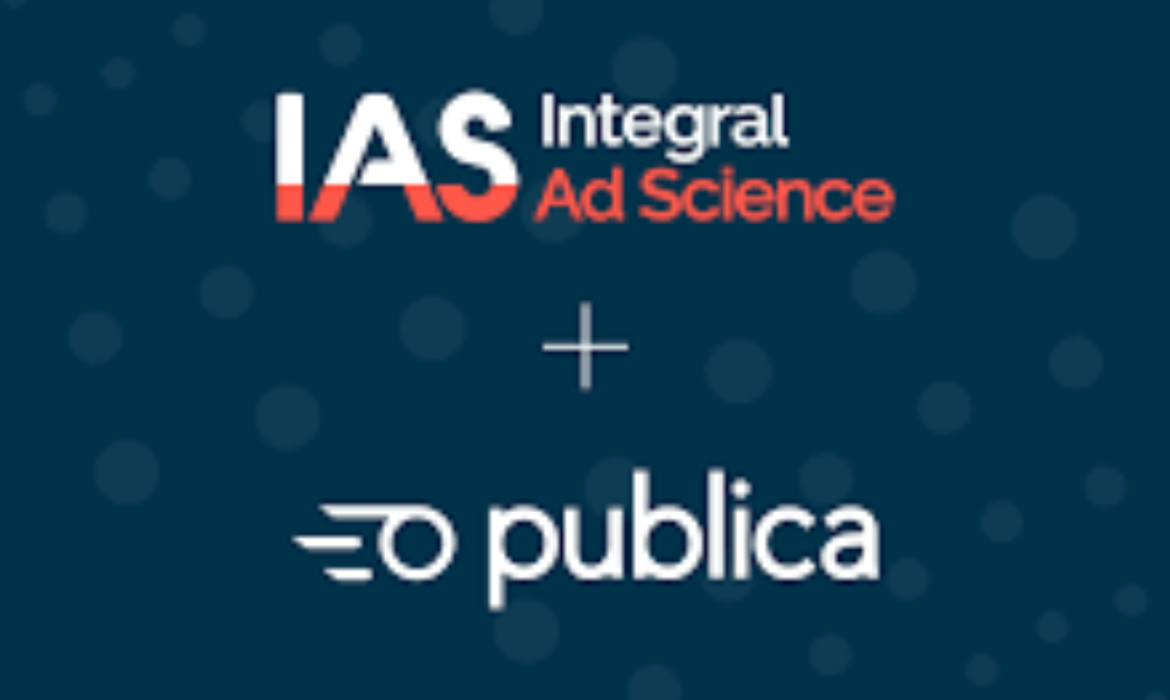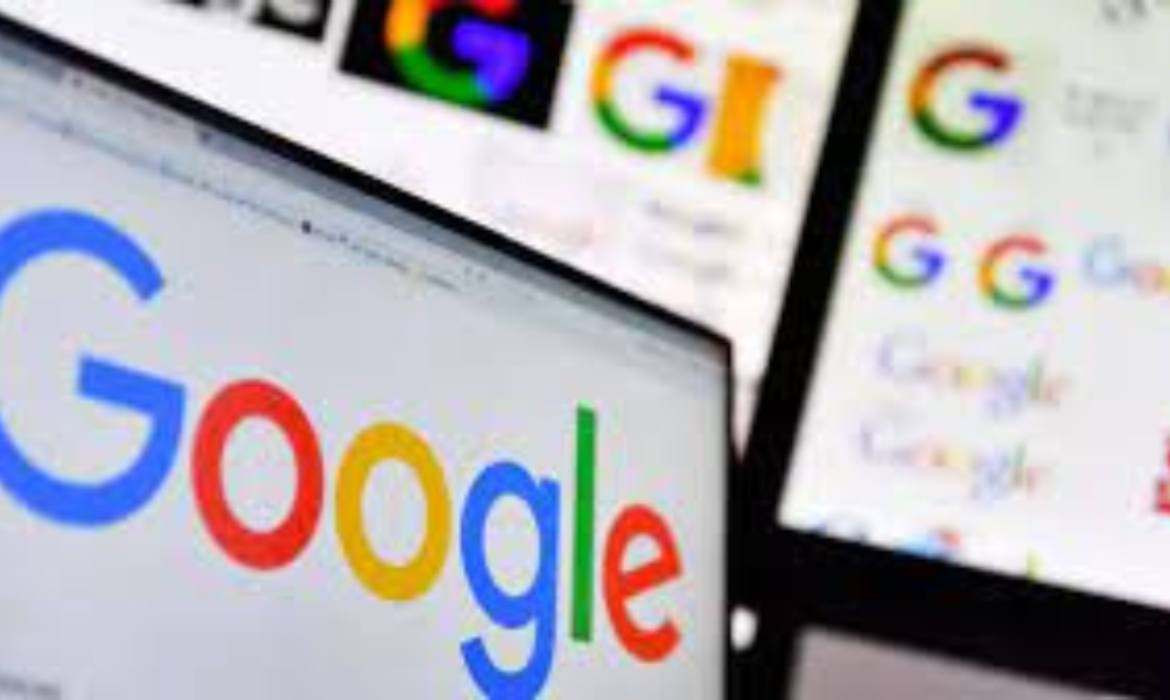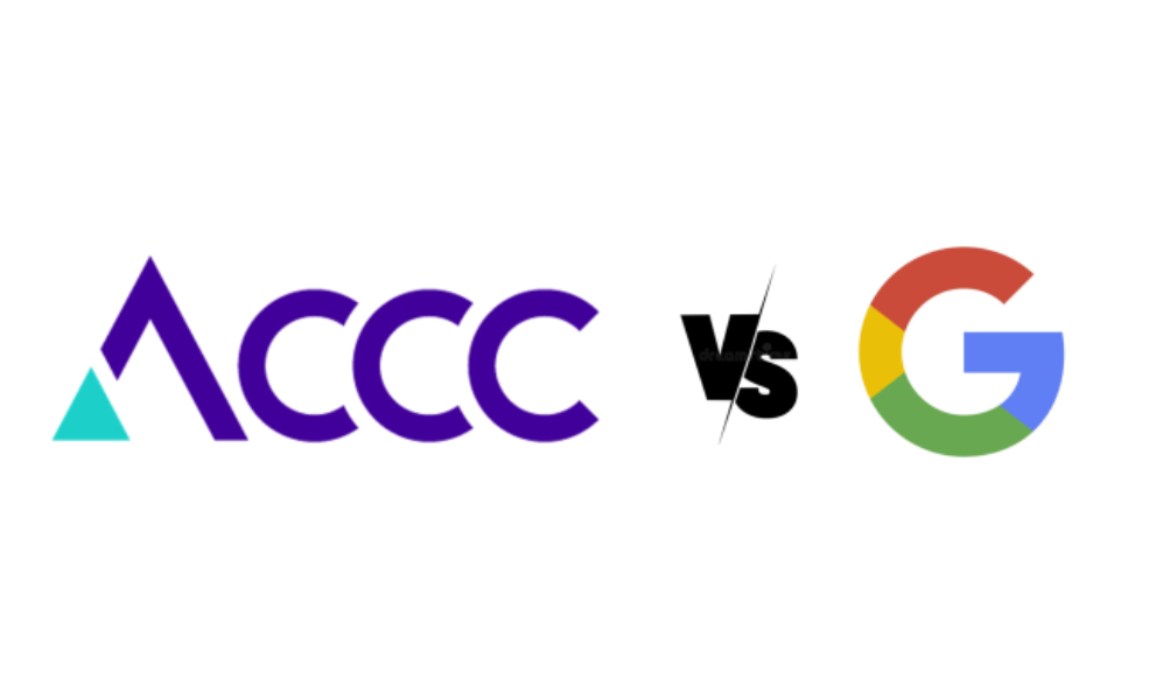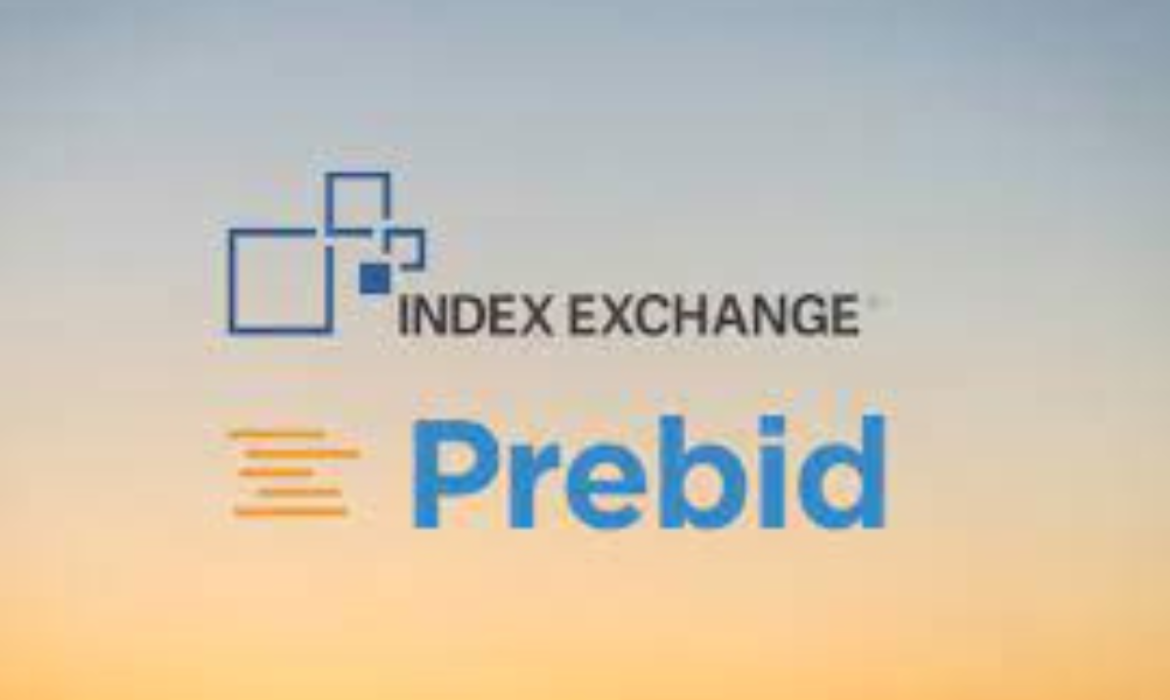Project Agora And Exit Bee Join Hands To Reimagine Advertising In MEA
With “Exit Ads,” Project Agora and Exit Bee have formed an unparalleled agreement to bring “micro moment” advertising to the MEA region. The format uses behavioral technology to detect when users are growing distracted, providing advertisers and publishers with distinct advantages.
Project Agora and Exit Bee: A Revolutionary Partnership
This exclusive partnership between Exist Bee and Project Agora is in itself a huge step in reimagining advertising in MEA. How?
Well, on one hand, we have Exit Bee which leverages pattern recognition and machine learning to recognize when users are disengaging from a website’s content and send a contextually suitable ad to re-engage them.
Outcome?
Exit Ads are served only when a person has disengaged from the content and is quitting the website, and they do not distract interested users.
Interesting Read: Trade Desk Partners With Choueiri Group For Better Programmatic Access In MENA
Now, on the other hand, we have Project Agora. Project Agora’s digital competence, agency connections, and direct integrations with over 400+ quality local publishers have cemented the company’s position throughout the Middle East and Africa.
Outcome?
By bringing Exit Bee’s ‘micro moment’ advertising, not only with Project Agora reinvent advertising in the region; but also produce impressive outcomes for brands and advertisers.
Join your hands together, and voila! – you now have Exit Ads that will establish a new, upscale advertising space that can offer tens of times the performance of traditional display ads.
Dimitris Tsoukalas, Regional Director MEA for Project Agora said that they were thrilled about this partnership with Exit Bees. He added –
“Their ( Exit Bee) pattern recognition and machine learning technology is a gamechanger: it analyzes users’ behaviour in order to identify the “exit” or “in-between” moments. Exit Ads leverage this to further enhance the monetization services we offer publishers, as well as providing another high-performing, creative ad-experience for advertisers.”
Interesting Read: TikTok MENA Newsroom: An Opportunity For The Region’s Finest Creators!
Of Advertisers And Publishers
Exit Advertisements provide advertisers with a brand-safe, sophisticated, and tailored ad experience, with 100% viewability and engagement rates 20 times greater than traditional banner ads.
Exit Ads provide publishers with a completely new monetization alternative that will minimize any disruption to engaged visitors. Exit Ads generate premium and long-term CPMs by generating high Engagement Rates. Publishers may promote content, increase subscriptions, perform surveys, and much more by re-engaging “lost” visitors.
Pretty amazing, ain’t it?
Pavlov Linos, CEO of Exit Bee went on record to say –
“Combining our premium offering with Project Agora’s strong relationships in the region makes us very enthusiastic for the future of this partnership and the results it will yield for local publishers and advertisers.”
Also Read: Connected TV Explained: The Essential Glossary Of CTV
Google Introduces New Ways For Publishers To Activate First-Party Data
Google unveils a new way for publishers to utilize first-party data for targeted advertising. Digital advertising is changing rapidly, and user privacy is at the heart of this change. Publishers, advertisers, and technology providers are rethinking and reimagining how they handle and use user activation to better protect people’s privacy online.
Google’s new offering lets publishers share Publisher-provided identifiers (PPIDs) with Google’s programmatic demand to improve their ad campaigns, targeting, and advertising experiences. Steve Swan, Product Manager, Google Ad Manager said in an announcement.
“By helping publishers expand the use of their first-party identifiers to more transaction types, like the Open Auction, our partners will be able to show ads that are more relevant to their audiences, which will increase the value of their programmatic inventory,”
What Is PPID?
As defined by Google in a blog post, Publisher provided identifier (PPID) allows publishers to send Google Ad Manager an identifier for use in frequency capping, audience segmentation, and targeting, sequential ad rotation, and other audience-based ad delivery controls across devices.
Interesting Read: Impact of Delay in Deprecation Of Cookies By Google On Adtech
The New System And Its Functioning
Publishers and advertisers will benefit from the new PPID sharing option because it helps protect their privacy.
- Google Ad Manager turns PPIDs into per-publisher partitioned IDs before sharing them with Google Demand, so users cannot be identified across different publishers’ sites and apps.
- As a result, Google Ads and Display & Video 360 collate anonymized data from publishers as a way to build audience segments.
- Advertisers can programmatically deliver relevant ads to publishers’ sites and apps using these segments based on first-party data.
- Furthermore, Publishers can earn more revenue in the auction while the data allows advertisers to unlock options, such as cross-device reach, frequency management, and creative optimization, without relying on cookies or other identifiers.
Interesting Read: Relief To Advertisers As Google Postpones The Elimination Of Third-Party Cookies Till 2023.
Why Is This New Update From Google Important?
Steve Swan, Product Manager, Google Ad mentioned that Google prioritized this product area based on partner feedback. It will continue to create features that provide publishers with the data and identity tools they require to prepare and grow their businesses.
“Investing in first-party data is a privacy-forward way that publishers can increase the value of their programmatic inventory now and in the future.”
This move could help news outlets recoup some of the lost revenue from Google’s other policies in light of Google’s tumultuous relationship with publishers. This feature enables publishers to control what data is passed and to which bidders they send signals. The Ad Manager only routes signals on behalf of publishers, but it will not be able to read them. Likewise, advertisers who advertise on these publications can show a more targeted and useful inventory to readers while maintaining the privacy of users.
Interesting Read: Google To Demonetize Ads That Spread Climate Change Misinformation
IAS Acquires Publica For $220M To “Help Advertisers”
Integral Ad Science (IAS) has invested $220 million in a cash and stock transaction to acquire Publica, a connected TV advertising platform. Every month, Publica serves approximately three billion adverts on CTV.
IAS is advancing its approach in this market with this acquisition, which aims to assist publishers market their video programs better across CTV platforms while also developing new solutions to provide advertisers visibility into the quality of this inventory.
With this acquisition, Ben Antier, co-founder and CEO of Publica, will now report to IAS CEO Lisa Utzschneider. Furthermore, the Publica brand will be added to IAS’ product line.
IAS’s decision seems strategic and logical as Publica helps boost publisher yield by connecting supply-side platforms to unique CTV inventory.
Publica’s unified auction, over-the-top (OTT) header bidding for programmatic purchasing, audience management, campaign management, server-side ad insertion (SSAI), ad pod automation, and sophisticated analytics would all be added to IAS’s CTV capabilities as a result of the deal.
Utzschneider, CEO, IAS commented on the acquisition –
Advanced data and technology will fuel the future of addressable CTV advertising. Now video publishers can increase their revenue, and in the future, we will help advertisers with a trusted way to measure the results of their growing CTV budgets
IAS’s current CTV technologies, which include the industry’s first CTV verification solution for worldwide invalid traffic (IVT) and viewability across programmatic and direct buying on all applications and providers, will be expanded with this acquisition.
Moreover, in the next months, IAS aims to provide a brand safety and appropriateness solution for CTV advertisers and publishers, backed by Publica’s platform and CTV content analytics.
CTV advertising is on the rise, and according to eMarketer, advertisers will spend more than $13.4 billion on CTV this year, with that figure expected to rise to $24.7 billion by 2024.
Google Agrees To Pay News Publishers $1 Billion For Their Content
Highlights:
- Google plans to pay $1billion to news publishers over the next three years in licensing fees.
- CEO Sundar Pichai announced on Thursday, Google’s biggest financial commitment to date will pay to partnered publications to create and curate high-quality content for a new product called Google News Showcase.
Background
Google has been a longtime frenemy with the world of news. Regulators around the world have been intimidating Google with policies that would compel them to pay publishers. News publishers like Rupert Murdoch’s News Corp and German media giant Axel Springer have been making noise for almost a decade that Google should pay for their content but the tech giant refused. To reclaim its credibility in the news publishing world, Google is launching Google News Showcase. CEO of the tech giant, Sundar Pichai said in its blog post that Google will pay $1 billion to news publishers in licensing fees.
Why it matters
In 2018, Google pledged $300 million effort to help news publishers. This announcement develops that effort further and its new product “Google News Showcase” would collectively pay selected publishers for high-quality content for new story panels that will appear on Google News. The initiative is live on Android devices and will eventually appear on Google News on iOS.

Details
The Google News Showcase will be first launched in Brazil and Germany. As quoted in Axios, Brad Bender, Google’s VP of product management for news said,
Our approach with Google News Showcase is a very different approach for Google from a product standpoint … It’s a new way for us to connect users to stories that matter. It’s a new way for us to work with publishers, but to also make money from their content beyond Search and News. And of course, it’s a new way for Google to support the future of quality journalism.
- Google News Showcase features the editorial curation of award-winning newsrooms to give readers more insight into important stories and helps publishers drive high-value traffic.
- The highlighting feature in the Showcase is ‘panels’ (as shown in the image) which allow publishers to package stories with more context that appear within Google’s news products.
- Publishers can include features like timelines, bullets, and related articles in the story panel. Eventually, they will be able to embed other components like video, audio, and daily briefings.
- Pichai said, “This approach is distinct from our other news products because it leans on the editorial choices individual publishers make about which stories to show readers and how to present them.”
- Similar to Apple News, Google will help to hedge their bets by offering free access to paywalled articles on certain participating websites. This might help publishers to convert visitors to subscribers.
- Bender said the funding wouldn’t be able to cover all news organizations so selecting the publishers on a market-to-market basis, with a focus on newspapers or sources with established audiences and significant local or regional news outlets.
Go Deeper
The panels designed for Google News Showcase promote publishers’ brands within Google’s products which will allow readers to get more perspective from the publisher.
- Publishers have often accused Google of stealing revenue as well as minimizing brand value. However, in the new product, the panels are directly linked to the publishers’ site which in return can monetize the traffic.
- Taking lessons from the rivals, Google will allow users to personalize feeds within Google News Showcase which means users can follow specific publishers.
The Bigger Picture
Google and Facebook specifically have made millions in advertising in the last few years. The news publishers weren’t able to compete and therefore started looking for alternative sources of revenue.
- Regulators across the world have been trying to bring policies and reforms that would require Google and Facebook to pay publishers for their content.
- Google launching Showcase in Germany is notable and surprising given that publishers in the country are involved in a years-long legal battle with Google over copyright issues. In the end, Google won the case.
- Google has been facing a lot of anti-trust scrutiny in Europe and therefore the tech giant needs to rehabilitate the image.
- According to a Financial Times report, Angela Mills Wade, executive director of the European Publishers Council said that her members were “quite cynical ” and said,
By launching a product, Google can dictate terms and conditions, undermine legislation designed to create conditions for a fair negotiation, while claiming they are helping to fund news production.
What’s next
Google initially launched in Brazil and Germany but will gradually expand to other markets in Germany, Brazil, Argentina, Canada, the U.K., and Australia. Google says it has signed deals with more than 200 publishers. The first publications to launch will be Der Spiegel, Stern, Die Zeit, Folha de S.Paulo, Band, Infobae, El Litoral, GZH, WAZ, and SooToday. Pichai said that India, Belgium, and the Netherlands will be next on the list for expansion.
Explaining ACCC vs Google: Clash Over Paying Media Companies For News
Tech giants are facing tremendous pressure to pay publishers for their news content from across the world and Google is preparing for the fight in Australia. Recently, the competition regulator in Australia issued a draft bill- New Media Bargaining Code that wants to force the duopoly Facebook and Google to pay media companies for news.
The question arises, should Australia implement the new rules that will pave the way for other global regulators to follow the suit as the European regulators ramp up the pressure on the digital giants.
Here are all the latest updates you need to know over the row between Google and media companies and can have a huge impact on the regulatory agencies and governments right around the world.
Google’s Tussle With Publishers in Australia
The long-running tension between Facebook and Google with the media companies have been for years over how the former display content, with publishers demanding to be paid by the tech giants for the privilege.
Last month, Australian regulators the Australian Competition and Consumer Commission (ACCC) released a draft code –News Media Bargaining Code. The code allowed news publishers in the country to negotiate compensation collectively or individually with the two tech companies for sharing or displaying their services. The draft code is aimed to address “bargaining power imbalances” between Australian news businesses and Google and Facebook.
The ACCC proposes a compulsory arbitration process and if the news businesses and digital platforms cannot strike a deal during the three-month negotiation and mediation process then the parties can select an arbitrator or there can be an assigned arbitrator by the Australian Communications and Media Authority. Non-compliance with the code would result in fines up to $10m per breach, three times the benefit obtained or 10% of a digital platform’s annual revenue in Australia, whichever is greater.
The code involves minimum standards that would require digital platforms to give news businesses 28 days’ notice of algorithm change that will affect the referral traffic or the placement of the news. It also requires the tech companies to provide news media businesses clear information about the data they collect through users’ interactions with the news content.

Image Credit: ACCC
Why Did The Australian Government Introduce The Draft?
Google and Facebook have had a huge impact on Australia’s news industry as there is more than a 20% fall in the number of newspaper and online journalists since 2014 and the duopoly capturing a large share of digital advertising revenues. Earlier the plan was for a voluntary code. However, the Covid-19 pandemic resulted in a decline in advertising and revenues of news businesses as well as delayed the negotiations on payment. This led to the development of a mandatory code by the Australian treasurer, Josh Frydenberg to ensure a fair level playing field for news media companies.
Google’s Response to the New Draft code
The cacophony over Australia’s proposed News Media Bargaining Code law, which is currently in drafts is gaining momentum with Google publishing an open letter to the users about it. Google users visiting the homepage were presented with an ominous pop-up message that warns, “The way Aussies use Google is at risk” and “their search experience will be hurt by the new regulation.”

A screenshot of the Google Australia homepage. Image Credit: Mi3
This open letter from Google Australia managing director Mel Silva is a bold lobbying move that presents Google’s arguments against the new rules in front of million Australian users. Google argues that the proposed regulation would ‘put their free services at risk’ with data being handed over to big news businesses.
It also argued that the law ‘forces’ to give an “unfair advantage” to news publishers alone in Google Search and YouTube because they would be given information that would help them “artificially inflate their ranking over everyone else”. The Guardian reports that eligible media companies must meet the criteria of having revenues exceeding $150,000 a year and must have a certain presence in the Australian market. This points out that most larger media houses will have access to the information. Google also said that the law is putting user data at risk.
ACCC Hits Back With A Quick Response
The consumer watchdog was swift in its response, labeling the post as ‘misinformation.’ In the statement released, it said that Google would not be required to charge Australians for its free services unless it chooses to do so. Similarly, Google doesn’t need to share any additional user data unless it wants to.
Google Makes a Comeback
Google issued a strong rebuttal in its response to ACCC claims. It retaliated saying,
“We strongly disagree and are concerned that our view of the Code has been represented this way during a consultation phase.”
In response to the ACCC claims that Google would not be required to charge for free services, Google explained with an example that the code requires them to provide advance notice over changes in algorithms and said,
“Even assuming Google could comply with this provision, it would seriously damage our products and user experience. It would impact our ability to continue to show users the most relevant useful results on Google Search and YouTube.”
The search giant also disagreed with ACCC claims that Google would not require to share data and said that the codes require that.
“ requires Google to tell news media businesses what user data we collect, what data we supply to them, and ‘how the registered news business corporation can gain access to’ that data which we don’t supply to them.”
“This goes beyond the current level of data sharing between Google and news publishers.”
What Did Facebook Say?
Facebook had far less to say for now – William Easton, MD for Australia & New Zealand said in a line,
“We are reviewing the Government’s proposal to understand the impact it will have on the industry, our services and our investment in the news ecosystem in Australia.”
However, Facebook had earlier expressed disappointment over making voluntary ACCC code to mandatory and described the news as “highly substitutable” content.
Will This Make Way For U.S Publishers?
In the U.S, The News Media Alliance, a trade association that represents 2000 publishers is promoting a bill named Journalism Competition and Preservation Act, a law that would allow news companies to negotiate with online platforms regarding the terms on which content is distributed. However, at present competition law does not allow this.
Regulatory Changes Elsewhere in Europe
Spain and Germany had previously passed similar laws on the usage of news snippets but couldn’t manage to extract payments from Google or Facebook. In 2014, Spain made payments to publishers mandatory, Google chose to shut down its news service. Google threatens a similar response to French new laws as well.
In April this year, France’s competition authority ordered Google to negotiate with publishers over payment for using their news content – such as images, videos, or article extract. However, Google refused to compensate for displaying the content and setting up a legal fight against new EU copyright laws.
Last year, the EU introduced new copyright rules that require tech companies to license the content from rightsholders.
Does This Mean Google and Facebook Don’t Pay Publishers?
The answer is Yes and No. They pay to some publishers. In June, Google said it would pay certain media outlets it will feature in their news service (not released yet) in Germany, Australia, and Brazil. Terms of the deal weren’t disclosed. However, after the competition watchdog proposed the new code, Google informed local publishers that plans of licensing products – Publisher Curated News -are put on hold until further notice.
Another BIG Question, What’s Next?
As Google prepares for the ACCC fight, it would be interesting to watch the tide turning in which direction and how this landmark move will change regulations across the world.
The consultation on the draft proposals concludes on 28th August with final legislation is expected to be introduced shortly after the conclusion of consultations.
Here’s More: Morgan Stanley Forecasts Australian Ad Spend To Fall By 9% In 5 Years
Index Exchange Joins Hands with Prebid.Org to Deal with Industry Crisis
Prebid.org an organization that manages open source Prebid programmatic advertising solution announced that Index exchange (IX), one of the highly known supply-side platforms has joined them at the leader level. Mike O’Sullivan, Vice President of Product at IX has also joined the board.
Independent adtech firms are struggling to monetize the open web. As the regulations increase and third party cookies decline, the advertising ecosystem continues to face challenges in searching for new ways to track and monetize users on the open web. This reinforces the need for industry leaders to come together to build a collaborative solution otherwise there are high chances of intense competition from the duopoly like Google and Facebook.
Mike O’Sullivan said in a statement,
“The industry has very little time to solve for what’s to come after the third-party cookie, and we know collaboration is going to be an essential element of our path forward.”
“In addition to solving the third-party cookie challenge, publishers are increasingly trying to monetize in an omnichannel world, and with that comes complexity. Prebid.org is an excellent forum to discuss, design, and standardize potential solutions with a wide variety of stakeholders.”
Prebid.org is an industry-wide supported initiative to promote the fair, transparent, and efficient unified auction. Participating members contribute to the open-source projects like Prebid.js, Prebid Server, and Prebid Mobile. Index Exchange will be joining the Prebid.org team of 55 member companies that include CafeMedia, Magnite, MediaMath, OpenX, PubMatic, SpotX, StreamAMP, The Trade Desk, and Xandr.
Tom Levesque, President of Prebid.org said,
“We’re very excited to have Index Exchange join Prebid.org. The community is looking forward to their contributions and leadership across the ecosystem.”
“IX’s participation solidifies Prebid.org’s role as the best place for publishers, SSPs, DSPs, and buyers to create the future of the unified auction.”
Adtech companies are collaborating together to find a solution to third-party cookies after Google announced turning web trackers from Chrome by 2022. and recently, Index Exchange took Live Ramp cookieless identity products globally in an effort to connect publishers and advertisers.
Read More: LiveIntent and Rubicon Project Invest on a Non-Cookie Based Identifier
Unruly Extends Partnership with Double Verify for a Brand-Safe Environment
Unruly, a video adtech company announced the expansion of its brand protection solution to advertisers through a global partnership with Double Verify, a leading digital software platform for media measurement, data, and analytics.

Earlier this year, Unruly’s partnership with Double Verify was extended to the U.S., is now being rolled out across multiple markets worldwide, including the U.K.
What Is The Deal About:
As a part of the deal, Double Verify’s fraud-filtering solution will be implemented pre-bid across Unruly’s omnichannel marketplace UnrulyX will ensure that all brands and ad agencies’ ads are delivered in a brand-safe environment irrespective of the device or formats. Unruly X has access to more than 2,700 direct publishers globally.
Fraud activity is increasing in Connected TV. Recently, Double Verify provided its fraud-filtering solutions to Connected TV (CTV) and tracked a 120% increase in fraudulent CTV and mobile apps — with over 500,000 fraudulent CTV devices detected per day.
The two-year partnership also covers Unruly’s sister brand Tremor Video, a leading programmatic video, and advanced TV platform. Double Verify is the verification partner for of all Tremor’s international activity. Unruly is also the founding member of WFA’s Global Alliance for Responsible Media which works with the world’s biggest advertisers and agencies to institutionalize cross-industry standards and approaches towards brand safety.
Unruly’s brand safety solution, UnrulyX Shield is industry-recognized and certified by DAA and TAG.
What They Have To Say:
Steven Woolway, EVP of business development, DoubleVerify said,
“Unruly has distinguished itself as one of the true innovators in the advertising technology space. I applaud the measures they have taken to create a high-quality marketplace, and I’m proud of the role that DV plays in ensuring inventory is fraud-free.”
Hilary Goldsmith, Unruly’s chief customer officer said,
“DoubleVerify’s proven reputation among our clients, coupled with its comprehensive CTV fraud filtering solution, gives us confidence that this partnership will provide brands with the safest environment for reaching and engaging consumers.”
Read more: Much Noise About Customer Data Platform, But Why?
LiveIntent and Rubicon Project Invest on a Non-Cookie Based Identifier
LiveIntent and Rubicon Project have agreed to help publishers and media to do business on a non-cookie-based identifier.
The idea is to bring the Liveintent Authenticated Bridge framework to the header to help marketers and publishers reap the benefits of the ecosystem. The framework will be delivered via the bidstream of the Rubicon Project. The Liveintent Authenticated Bridge – a unique, privacy-safe identifier known as nonID will connect advertisers to publishers using hashed email addresses – to support media buying and selling without dependence on third-party cookies.
The key to Liveintent’s addressability framework, Authenticated Bridge for publishers and marketers is powered by email. Additionally, it allows media traders to understand the primary email associated with the particular browser or device by connecting it to the first-party data signals.
Prior to the pandemic and civil rights protests, ad tech 2020 was looking for options to replace cookies after the largest internet browser Google Chrome announced a gradual phase-out of tech by 2022.
Google is yet to implement the planned updates like other web browsers. The market share of Google Chrome is almost 50% of all installed internet browsers which means it can have a huge impact on the industry and can lead to a closedown of many independent ad tech players.
In the interim, efforts are made to find a way forward for the $130 billion industry where online technologies are being monitored by privacy regulators. Liveintent powers marketing and advertising technology that is cross-device and cross-browser compatible and does not require the use of third-party cookies. CEO Matt Keiser described Authenticated Bridge solution as nonID which means open to all – anyone can adopt it. Liveintent works with around 2000 publishers and 1000 advertisers.
As reported in Adweek, Matt Keiser said,
So, we haven’t made it something you need to sign a contract in order to adopt. Additionally, our ID is 1:1 with an email address.
This means the days of closed solutions are over for publishers and brands as Liveintent does not encrypt its identifier per user, unlike other proprietary solutions. Publishers had to struggle to monetize the web traffic when Apple and Mozilla restricted third-party cookies. This is where the Bridge solution can help to offset such issues. Liveintent’s first-party solution is powered by its Identity Graph whose insights are directly connected with validated and active emails.
CEO Matt Keiser said,
This framework works with established vendors’ proprietary IDs but is also pen to any publisher or brand that has their own email data. LiveIntent and Rubicon Project believe in the power of open source technology and have built solutions designed for easy integration and adoption, all while adhering to data compliance.
Garrett McGrath, Vice President of Product Management, at Rubicon Project said,
We continue to work with industry partners to develop community-driven identity solutions that simplify and enhance the advertising experience for publishers, advertisers and consumers, all the while respecting data privacy. LiveIntent’s Authenticated Bridge framework provides an identity solution that is reliable, transparent, and streamlined.
He further added,
In addition to helping publishers make their inventory more accessible and useful to advertisers, people-based identifiers improve the end user’s digital media experience.
Meanwhile, many independent players like AT&T, Live Ramp, and the Trade Desk have built different IDs in the replacement of cookies and are eager to offer their offerings. Google has also built its own ID tech and solutions under Privacy Sandbox but the industry is calling for governance with rising concerns of continued dominance from the duopoly Google and Facebook.
Lotame Introduces Cookie Free Data Technology For Publishers and Marketers
Lotame, the world’s leading unstacked data solutions company is looking to help publishers, marketers, media, and agencies to leverage their first-, second-, and third-party data to create and analyze audience segments with a new suite of data enrichment products called ‘Lotame Panorama’.
The suite will help users find customers, increase engagement and growth revenue across the cookie challenged web browsers like Safari, Chrome and Firefox, mobile devices, and OTT environments.
Jason Downie, chief revenue officer, Lotame, said,
“First-party data is a valuable asset, but unfortunately it doesn’t provide the scale marketers need. Bridging together customers’ online and offline lives has been a persistent industry dilemma that was made even more complicated with recent browser changes. To solve for this, we developed Panorama which enables a fuller view of activity that is actionable across a connected ecosystem, even in cookie-challenged or first-party-cookie-only environments.”
Unwrapping data enrichment services
Panorama offers two solutions, one for marketers and agencies, the other for publishers and media companies. Lotame has unveiled three data enrichment services powered by Cartographer, Lotame’s ID graph technology.
- Panorama Insights: It offers a varied set of curated data tools and analysis for better storytelling, prospecting, segmentation, and modeling without cookies needed. It connects users’ first-party data to second and third-party data across the web, mobile, and OTT devices from 250+ online and offline data providers.
- Panorama Buyer: It ensures that media buyers connect customers’ attributes across first-, second- and third-party data to create an addressable audience in the cookie-challenged environment.
- Panorama Seller: This allows publishers to monetize their inventory across the web, mobile, and OTT through direct or programmatic advertising. It also enables publishers to set exact CPM’s in cookie challenged environments.
Also Read: Prebid Server Aims To Ease Header Bidding For Programmatic Advertisers
Panorama launches as publishers and others that rely on extensive data sets may have to struggle to find the scale they need. Lotame has appointed Ruby Brenden as head of data products to drive Panorama Insights forward. Brendan said,
“I have spent the last decade helping innovative marketing companies launch products. I am excited to launch Panorama, a solution that is exactly what the industry needs as third-party cookies start fading out. Insights will give marketers and agencies a single, trusted place to uncover relevant data stories and build smarter, addressable audiences, which means better advertising for consumers.”
Customers Signing for new Lotame Panorama products
Companies like Procter & Gamble and IPG’s Cadreon have already signed up for the new Lotame Panorama products.
Clients agree and testify,
Paras Mehta, Business Head – India, at Cadreon said,
“Understanding customer attributes and behaviors is key to our data-driven strategy when working with advertisers. Data enrichment using high-quality second and third-party data like Lotame’s enables us to draw insights we wouldn’t have access to with first-party data alone. We look forward to leveraging more of Lotame’s data solutions to deliver the exceptional service and results Cadreon is known for.”
Tim Hung, marketing director and lead of media, P&G Hong Kong & Taiwan said,
“Improving the lives of consumers around the world isn’t just our mission, but our daily practice..This requires getting to know those customers through the use of high-quality second and third-party data vetted and verified by Lotame. As cookie blocking becomes more prevalent, data enrichment solutions like Panorama will become even more important for global brands like P&G to understand customers and engage with them in meaningful and respectful ways everywhere they are.”
Partners at launch include Domo amongst others. Jeff Skousen, GM, North American Corp/Ent Sales, at Domo said “We’re excited to partner with Lotame to power Panorama Insights.” He further added,
“By dynamically integrating data and delivering live visualizations, Lotame is providing brands bespoke audience real-time insights in a digestible, actionable format to improve analysis, prospecting, segmentation, and data modeling.”
Financial Report Card Of The Global Giants And Industries In COVID-19
Media companies are facing distress owing to the pandemic crisis, particularly those relying on advertising revenue. The current situation is precarious that compelled companies to roll out furloughs, pay cuts, or layoffs.
Even though publishers are recording high traffic, there is a mismatch in demand and supply in the ad market. Subscriptions are a silver lining for publishers but again sustainability is in question. Many businesses are impacted due to cancelled live events like sports that would bring a vast sum of revenue. Newsstands sales have also witnessed a fall.
Keeping the above factors in mind, below is the analysis of leading media companies’ financial and quarterly reports and their progress in this crisis.
CONGLOMERATES
Bertelsmann: Ad funded businesses were affected while music, services, and education business performed well.
The German media conglomerate Bertelsmann’s revenue declined by 2.7%. The advertising-funded business Q 1 was “highly affected” by the pandemic. Within the digital business RTL Group specifically, the revenue was down 3.4 % owing to the cancellation of ad bookings at the start of March or postponement of productions.
Music business BMG, its Arvato services business and its education business performed well. Subscription to the online streaming services was up 34% Y-o-Y.
Comcast/NBCUniversal: Broadband business upticks whereas rolling out Peacock streaming service.
Comcast is a large company with its broadband business marks an uptick with signups. and revenues up by8.8%. On the other hand, its theme park, TV and film production business is on hold.
NBCUniversal and newly acquired Sky TV cannot broadcast live sports. The company expects the advertising business to be down significantly in Q2
NBCUniversal Q1 revenue was down 7% and it rolled out ad-supported Peacock streaming service to Comcast customers in April.
Disney: Theme Parks and Sports Broadcast Shut, Disney+ subscribers up.
The crisis led to shutting down of theme parks, and productions and theatre movie releases were put to hold. Ad revenue at its TV business was affected as ESPN couldn’t air any live sports.
However, it stepped up the launch of ad-free streaming service in European countries. Disney+ had 33.5 million subscribers by the end of Q1 and an average of $5.63 in monthly revenue per paid user. Disneyland Shanghai did reopen, at 30% capacity on May 11.
WarnerMedia (owned by AT&T): Q1 Revenues severely hit.
Recently, folded its Xandr advanced advertising unit into a bigger WarnerMedia business.
Q1 revenues of WarnerMedia was down 12% on the year-ago quarter to $7.4 billion due to lower ad revenues in March on sports cancellations. Movie productions are also on hold.
PUBLISHERS
News Corp: Circulation and Subscription revenue grows, Ad revenue takes a hit.
Rupert Murdoch’s News Corp includes various leading and established brands like The Wall Street Journal, The Sun, and many more in U.S, U.K, and Australia.
Overall revenue declined 7.8% to $2.27 billion in Q1 due to weak ad business, low ad revenues, and negative currency movements. April ad revenue for Dow Jones declined 20% from the prior year whereas for News Corp Australia and News UK fell by more than 45% which includes negative currency impact.
The Wall Street Journal reported circulation and subscription revenue growth by 1% reaching a record subscriber base of 3 million overall, of which 2.2 million are digital-only.
The New York Times: Focus on Subscription Revenue to thrive in the post coronavirus world.
The NYT is leading more emphasis on subscription revenues to reduce its dependency on ad revenue to be in a better position and thrive post coronavirus world.
NYT recorded the highest quarterly increase in new digital-only subscriptions-up 587,000 in Q1 -leading to a 5.4% increase in subscription revenue to $285.4 million. Ad revenue fell by 15% and likely to fall further in Q2 somewhere between 50% and 55%.
“Other revenues” segment is estimated to fall around 10% as licensing revenue from Facebook News is expected to be “more than offset”- by lower revenue from its live events and its TV series.
TV AND CABLE
Discovery: Their channels are new sports.
Discovery CEO David Zaslav on the Q1 earnings call said, “Our channels are the new sports — the numbers are huge” around its lifestyle channels like HGTV, Food Network, and DIY. The engagement with the characters and talent is enormous. Discovery is also saving money productions through the pandemic as the film shows from home.
Total revenue declined from 1£ in the first quarter to $2.68 billion and expects advertising revenue to fall significantly in 2020. Many sports events are postponed and 90% of the sports deals have force majeure provisions or provisions to not pay for the content that is not received.
Fox: Fox News gains the largest audience.
Revenue for the three months to March 31 rose 25% supported by the forecast of Super Bowl in February, an increase in political advertising, and growth in affiliate revenue. But in March entered coronavirus crisis leading to the postponement of sports events and suspensions of entertainment shows.
80% who signed up for Fox Nation streaming service from Fox news continued to become paying subscribers and advertisers from sectors like technology and communications looked for the transition from sports buy to news buy. Ad revenue within local TV stations to be down 50% from last year.
ViacomCBS: Streaming revenue continues to grow and more on its way441.2 b
Revenue for Q1 fell 6% to $6.67 billion of which advertising revenue marked a 19% drop though a comparison to last year would be unfair when it aired Super bowl and basketball tournament.
Streaming continues to grow- domestic and digital revenue up by 51% to $471 million and had 13.5 million streaming subscribers. It intends to build “a broad pay streaming product in multiple markets” over the next 12 months. It announced a distribution deal with YouTube TV, which will carry 14 ViacomCBS channels
DIGITAL GIANTS
Alphabet or Google: Faring well in this crisis and a better situation.
Q1 revenue stood at $41.2 billion, up 13% Y-o-Y basis(including Google cloud revenue and the ‘other bets’ segment).
According to CFO Ruth Porat, Youtube’s March revenue “decelerated to a year-on-year growth rate in the high single digits” and Google Network March revenue declined “in the low double digits.”
Google Cuts Marketing Budgets by 50%, Freezes Hiring, and launched a “Journalism Emergency Relief Fund”.
Baidu: A closer watch on the signs of recovery in the upcoming result.
Chinese advertising giant Baidu was the first to report the coronavirus crisis set to affect media companies and expect a revenue drop of between 5% and 13% due to advertiser pullback.
In April, it suspended updating content on certain newsfeed channels within its app due to government directives which may impact its marketing services revenue. On May 18, Baidu will give the next quarterly update, and would be worth watching whether there is any recovery in the ad business.
Amazon: The advertising business grew as directly related to eCommerce sales
Amazon’s Q1 revenue soared as consumers quickly shifted to shopping online amidst the coronavirus crisis. Conversely, revenue rose 26%, and profit dropped 29% compared to last year’s quarter. The cost grew to finish the surge in orders
In the financial statement, the ‘other’ category is advertising business- revenue grew by 40% to $3.9 billion in Q1. The growth is consistent with a little downward pressure in March but no major impact as its directly related to eCommerce sales. ‘
Facebook: Post Strong Earnings, Exceeds Projections
Facebook ad revenue grew by 17% Y-o-Y to $17.4 billion despite the instability in the digital ad market due to COVID-19.
Facebook saw strength in the advertiser’s vertical- gaming, technology, and e-commerce whereas travel and automotive were the weakest verticals in the first three weeks of March.
Facebook had Pledged $2M Grant Funding To Support Publishers Financially.
Snapchat: Users and Revenue Increases, ad spend declines
Snapchat reported in its Q1 2020 earnings – strong gains in both users and revenues but a dip in advertiser spend despite the growing concerns about the coronavirus pandemic. the company reported a 44 percent (Y-o-Y) increase in its first-quarter revenue to $462 million. Snap benefited as people used animated lenses to keep in touch with loved ones in this lockdown. Snapchat’s daily active user (DAV) base reached 229 million.
Direct-response advertising accounts for more than half of the company’s revenue and clients in sectors like gaming, e-commerce, and consumer packaged goods continue to spend even during the crisis.
Twitter: Work in progress over AdTech concerns
Twitter’s user growth jumped in March as people rushed to check the latest news updates related to the coronavirus. Despite a 9% growth in daily users, revenue was up only 2.6% to $807.6 million and reported a loss of 8.4 million in Q1 results.
In comparison to its competitors, Twitter doesn’t have a direct-response advertising business. Therefore, the company is improving its mobile application promotion products and rebuilding its ad server which is expected to be up and running by Q2.

